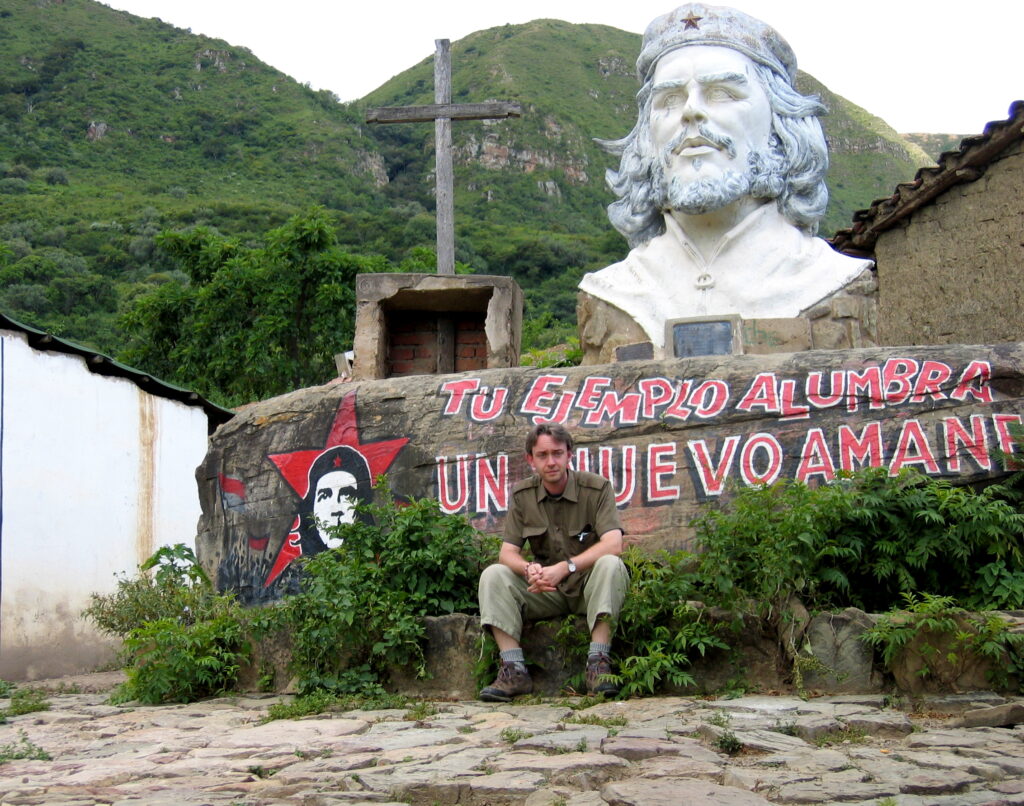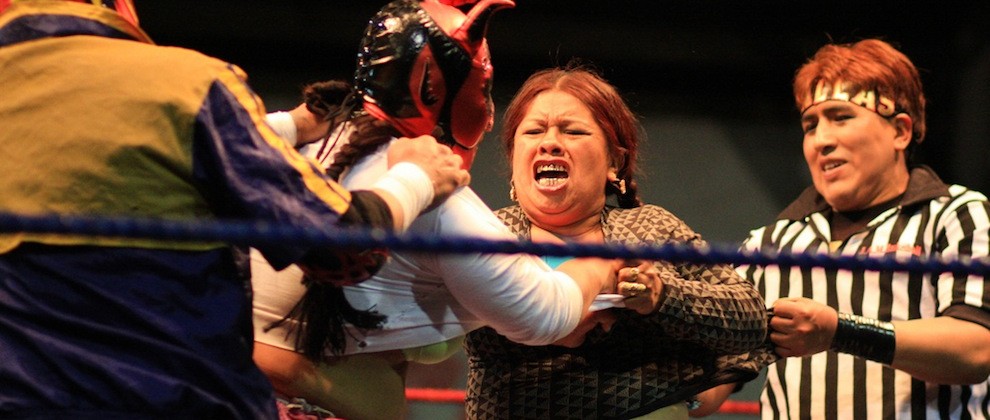
* Carnival season is kicking in but I’m trawling the back catalogue this week for an alternative to the average fiesta.
Follow me on Twitter, or subscribe to the RSS, for weekly updates from my travel-writing archive in the months to come.
The journey starts with a shot of local moonshine.
In between it features an ancient festival to honour Pachamama, the earth goddess; vast, Andean landscapes; and a huge, alcohol-fuelled punch up.
This is the strange world of tinku, a highly ritualised folk ceremony held in Bolivia’s rural Potosi region during the harsh Andean winter.
Ancient rites
Tinku means ‘encounter’ in the indigenous Quechua tongue and Bolivia’s most dramatic fiesta is essentially a harvest festival, celebrating the end of the agricultural year.
What makes it stand out, however, is the colourful clash of Catholic and Pagan beliefs, which draw on the ancient rituals of Potosi’s indigenous communities. Five major tinku are held around Potosi annually with similar, smaller festivals taking place in remote highland communities.
As the tinku builds to its violent crescendo, an offering to Pachamama is sealed in the spilling of human blood.
Traditionally the villagers celebrating tinku have excluded tourists but, in the last couple of years, tour agencies in the city of Potosi, working with the local communities, have started offering tinku tours to witness the rituals of Andean communities that have changed little despite centuries of progress.
The best known of all tinku is held each May in Macha, a 3,000-strong community of adobe houses, daubed with the slogans of local political parties, and dirt-track sidestreets, all built around a central plaza overlooked by a rough-stone church. Poor and remote, it sits astride the Andes at some 4,000m above sea level and is a six-hour drive north of Potosi by bus.
I joined a small group of curious backpackers and amateur anthropologists with tour agency Koala Tours, setting out on a bright but chilly morning from Potosi.
During the Spanish Conquest Potosi was awash with silver and noblemen, but today it’s a windswept place with a vaguely elegiac feel. Cerro Rico, the mountain that looms over the city, is a shadow of its former self, plundered over the centuries for the now-near-exhausted silver reserves.
Before embarking on the trip, our guides makes a cha’lla, a ritual offering to Pachamama for luck on the road ahead, accompanied by a shot of chicha, the local maize-fermented hooch. The drink is as rough as the road that lies ahead.
We rumble over crater-strewn tracks, stopping at a ramshackle hut by the roadside for a plate of soup with rice and potatoes and a last chance to stock up on biscuits and bottled water.
Village life
Arriving in Macha at dusk, we find the town square bustling with a pre-tinku market. Stalls selling fruit sit next to men with ancient machines for sharpening knives and stitching shoes.
Our guesthouse, meanwhile, is hardly five star: bleak dorm rooms with stained mattresses, a toilet block without doors and a loose hose gushing ice-cold water for a shower. By the time we are served a simple dinner of soup, rice and coffee, some of the group look to be already cursing their curiosity.
After dinner we find Hernan Tarqui, the 33-year-old Catholic priest of Macha, sipping coca tea in a shabby house next to the church.
“These are country people are still living by the Old Testament.”
He adds: “About 90 per cent are Catholic but the traditions of the ancient civilisations are still very strong in this region.”
The next morning we’re back on the bus, trundling out across vast, dusty plains. Dropped where the road dissipates, it’s then a 20-minute, cross-country yomp to the village Cruz de Machacamarca, where the first official day of tinku is in full effect.
A tiny pueblo with llamas and dogs roaming free between the adobe huts, it is surrounded by a thin, red soil eroded from the surrounding hills.
Village elders from the scattering of nearby rural communities, many dressed in costumes modeled on the Spanish conquistadors [see above], carry large crosses, carved with images of Christ, to a stark, white church to be blessed by the local priest.
The rest of the villagers, meanwhile, are dressed in brightly coloured ceremonial clothes and whipping themselves into an early frenzy by swilling moonshine, dancing and indulging in isolated minor scuffles.
Around the periphery, women and children huddle beside fires with bubbling vats of beans and corn. Some of the early victims, sporting black eyes and split lips, lay slumped by a stone wall.
The carcass of a freshly sacrificed llama is being ransacked for the pot. We watch the dancing, keeping a judicious distance, but already the atmosphere feels tense as if building towards a dramatic climax.
“This is a subsistence farming community with people living on 40 Bolivianos (£2.50) a week,” explains Hugo Mondocore Gabriel, the village elder of the Uluchi community. “We only decided to invite tourists to witness the tinku four years ago.”
“We needed to bring money into the community as we have 450 schoolchildren in these villages.”
Old scores
After the blessing of the crosses in the communities, rival villagers start to come together on the second day in Macha to dance, drink and settle their differences from the past year with bare fists.
But this is not just some drunken brawl. Tradition dictates that spilt blood on the final day brings fertility to the rocky soil and a dead villager ensures an especially abundant harvest for the following year. The death often goes unreported, however, and is handled behind the closed doors of the community.
Before that, in Macha’s sun-bleached town square, indigenous women, dressed in the traditional garb of long flowing skirts and embroidered shawls [see below], patrol the crowds with whips to administer a whiplash of community justice to anyone fighting dirty. The cow skin hats they wear are tough enough to withstand a sudden shower of stones and missiles from the crowd.
Positioned on a balcony in the town hall, we can see how, as the afternoon gives way to evening and the shadows loom larger on the stone cobbles, the drinking and dancing is increasingly fervent.
As rival factions charge drunkenly into each other, some lashing out with fists, the women build the rhythm, performing a shuffling, feet-stamping dance routine to the eerie strains of cane flutes and charangos, a mandolin-like Andean instrument.
The chanting and goading intensifies with dancers engulfing the main square. The market traders continue to man their kiosks, interrupting commerce only to throw water over dancers stumbling into their wares.
Meanwhile the dull thud of a CS Gas canister heralds the arrival of the local Police, trying to exert some influence over the crowd. But the dancers simply retreat to sidestreets to lick their wounds before relaunching themselves into the brawl.
Darkness delivers the first serious casualties to Macha’s tiny hospital. Outside women are looking for their injured husbands while the ground is thick with blood and urine. Our guides have warned that us that, as guests, we should leave on the third and final morning of tinku to leave the community to complete the annual ritual away from the prying eyes of foreigners.
Night terrors
As we climb into our sleeping bags in the guesthouse that night, the sound of rocks crashing off the roof lulls us to sleep.
But before bed, we go in search of Father Hernan one last time. He will be staying up all night and shakes his head wearily as we say our goodbyes.
“Of course the Church opposes tinku. We want to see a coming together of communities to share their blessings,” he says, as an assistant arrives to tell him the church has been secured for the night.
“But we can’t just change the culture overnight.”
* This story was first published in Geographical magazine in 2007. Liked this? Try also In the footsteps of Che Guevara in Bolivia.
Post your comments below.




 [Photo via VisitScotland.com]
[Photo via VisitScotland.com]
